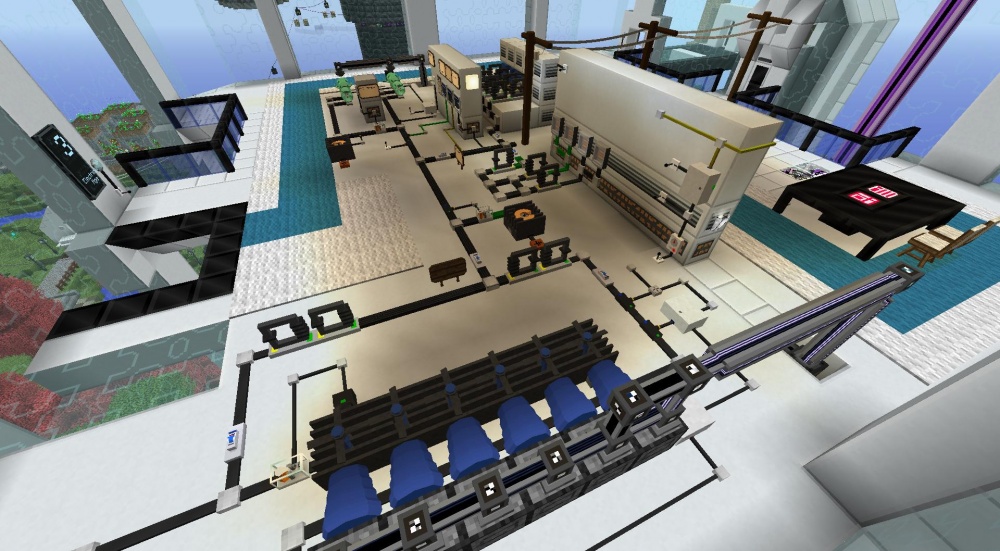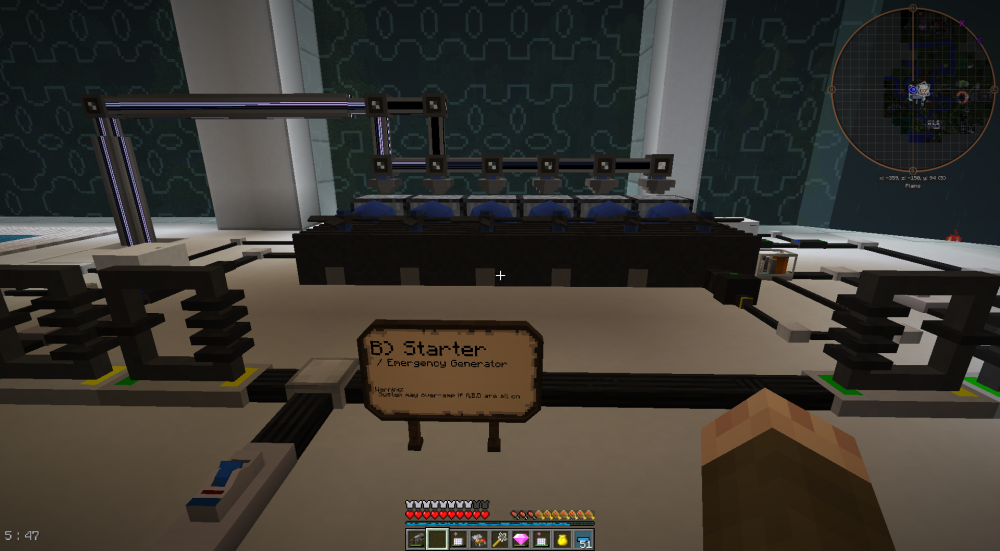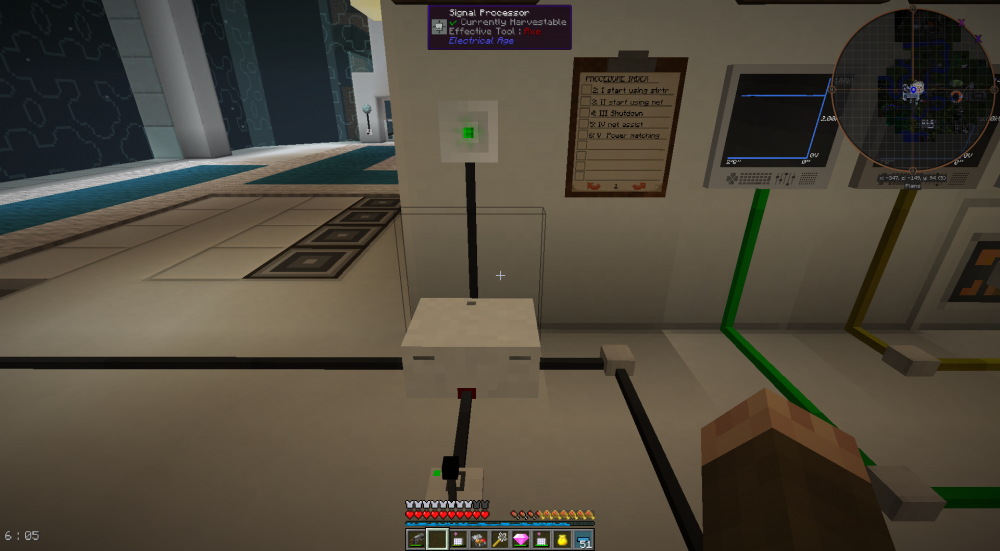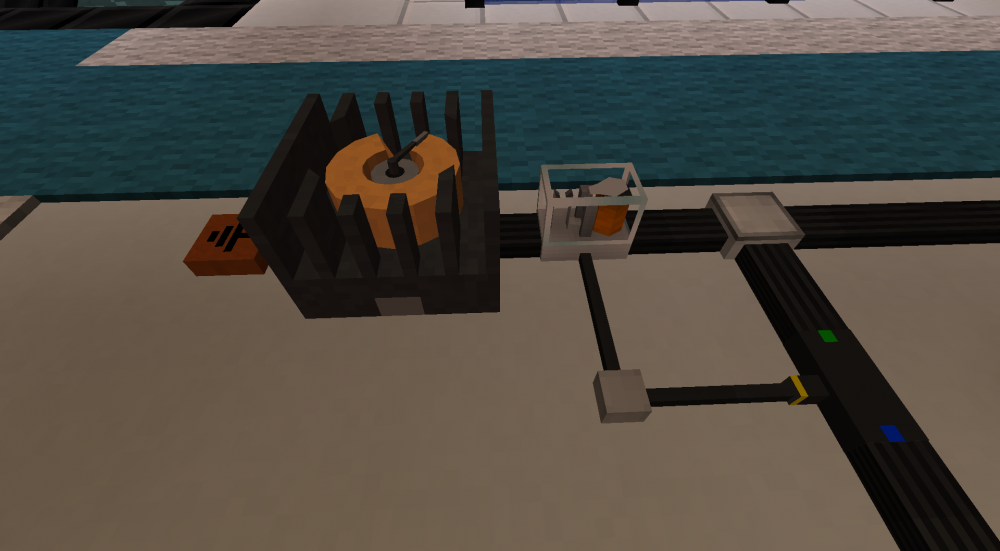Simple gas turbine control
From Electrical Age
Someone asked how to create a simple Gas turbine control.
Here's a simple dump from IRC with images inlined. This can serve as a placeholder until we have better documentation.
Click images for file info (and ability to zoom)
Getting it working
<kim_> you can actually pretty much run a gas turbine without anything fancy <kim_> you may need a signal processor though <kim_> ********: So part of the fun of the gas turbine is figuring it out for yourself ;-) <kim_> So... you' <kim_> ll need a few electrical probes ... <kim_> Ok, anyway, you might need a few signal processors <kim_> but nothing much beyond A * B * C
<kim_> Ok, this looks a bit complicated, but bear with me <kim_> it's really a few simple subsystems <kim_> you might be able to make it simpler <kim_> To begin with ... a gas generator can't start by itself. It needs a starter.
<kim_> So your old 200V setup can do that <kim_> just step up the voltage to 3200V using transformers <kim_> Now generators will generate electricity when they spin ... <kim_> but they also work backwards: you can apply power to spin them up
<kim_> once you get the turbine+ generators over 200 RPM, (and ensure the turbine gets fed some form of fuel like syngas) <kim_> it'll spin up just fine <kim_> problem is, it'll KEEP spinning up <kim_> by default, it's set to full throttle, and ... yeah... it'll overspeed and BOOM
<kim_> So ... <kim_> the simplest thing you can do ... <kim_> voltage and rpm are directly correlated. If the one goes up, the other goes up, and if the one goes down, the other goes down. <kim_> optimal voltage is 3200V at 800RPM <kim_> so we can just put a probe on the line and measure that <kim_> note that <3160V in this example gives 100% output, and >3250V gives 0% output <kim_> if we hook this up to the turbine with a signal wire, it'll control the throttle. If the turbine goes too fast, it'll be throttled down, if it's ok to go faster, it'll throttle up <kim_> this ain't the prettiest, but it works <kim_> So... There's still some things that can go wrong in this situation. but the turbine won't just asplode in your face ;-)
things that can go wrong
overamp
<kim_> ok, so 2 things that can go wrong ... <kim_> first thing is... the turbine+generators are very powerful. You can send more amps down the line than the line can handle, and it'll melt! <kim_> so maybe we want to control our turbine speed based on Amps?
<kim_> Well, we can have the best of both worlds , we can have the voltage based signal and amps based signal hooked up to a signal processor, and just do A*B (or whatever the 2 inputs are) <kim_> this works because we're multiplying % . If it's 100% ok to let the turbine run at a certain speed based on amps, and the turbine should be running at 60% due to volts, 100%*60%=60% <kim_> (or if you like proportional numbers, which is what the signal processor uses: 1.0*0.6 = 0.6 ... so no probs!) <kim_> ... if we're messing with a signal processor anyway, we can also add an on/off switch. 1= on, 0 = off. <kim_> same way... now we get A*B*C
<kim_> ... and that's the most complex logic you need to do :-P
inertia leads to overvolt
<kim_> The second thing that can go wrong is that the turbine has inertia <kim_> Say the breaker trips, even if we cut the throttle immediately, the turbine+generators keep spinning. <kim_> so they keep putting out power. But the power has nowhere to go ! <kim_> well... we'd better provide an emergency outlet.
<kim_> make a relay that dumps power to ground , and have it trigger if your voltage goes too high <kim_> *obviously* if you dump power direct to ground with no sort of resistance, That Would Be Dumb <kim_> so put a big resistor with cooling fins on top of there. (the large rheostat works fine)










